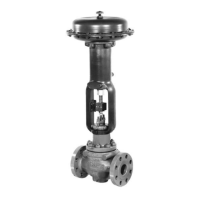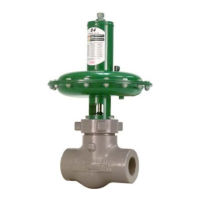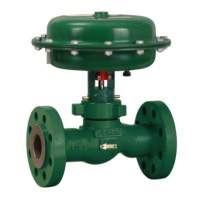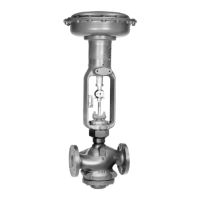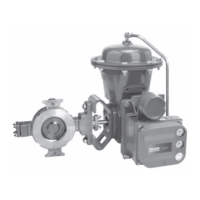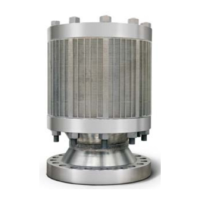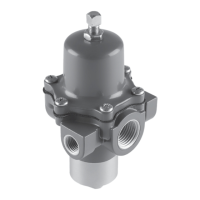Prior to valve startup:
New Installations
Blow down inlet steam piping to remove any debris
such as weld beads by opening the drain valve of the
inlet strainer to the control valve. Close the isolation
valve and disassemble strainer to remove accumulate
debris. Repeat as necessary until strainer basket is
free of debris.
Old Installations
Open all upstream and downstream drain valves at
drip legs and strainers to drain condensate that may
have accumulated during the shutdown period. Crack
the inlet isolation valve to the pressure reducing
stations to ush any residual condensate. Close the
drain valves once the drain is free of condensate.
Pilot Adjustment
Loosen hex nut on screw before adjustment. To adjust
the downstream reduced pressure setting, turn the set
screw clockwise into the spring case to increase the
downstream pressure setting. Turn it counterclockwise
out of the spring case to decrease the setting. Tighten
it once adjustment is made.
Type 92B
To put the valve into operation after installation or
after disassembly for inspection or repairs, proceed as
follows, referring to Figures 4, 9 and 10 as necessary.
1. Relieve all spring compression on the pilot spring
by loosening hex nut (key 16) and turning set
screw (key 15) counterclockwise (out of the
spring case).
2. Open the upstream block valve.
3. Open the downstream block valve slowly.
4. Close the bypass valve.
5. Slowly turn the set screw of the pilot clockwise
into the spring case until the downstream pressure
reaches the required setting. Tighten hex nut on
the set screw.
Safety Override System
Use the following procedure to put the system into
operation, referring to Figure 3 as necessary:
1. Remove all pilot control spring compression
from the Type 6492HM safety override pilot
by turning the adjusting screw out of the spring
case (counterclockwise).
2. Adjust the Type 92B upstream working pilot’s and
Type 92B downstream working pilot’s adjusting
screws into the spring case (clockwise) to their
maximum adjustment.
3. Slowly open the upstream block valve to introduce
inlet pressure to the system.
4. Open the downstream block valve and control line
block valves, if used.
Note
Some ow is needed to make pressure
settings accurate.
5. If a bypass is used, slowly close the bypass line
block valve.
6. Adjust the Type 6492HM safety override pilot to
the desired downstream override pressure. The
safety override pilot’s setpoint must be higher than
the downstream working pilot’s setpoint by the
amounts listed in Table 4.
Note
The normal pressure and maximum
override pressure should be set at
or below the safe working pressure
of the equipment and piping system
downstream. (Reference applicable
codes and/or standards for maximum
allowable or safe working pressures for
equipment and piping systems served.)
7. Adjust the Type 92B downstream working pilot to the
desired normal downstream control pressure.
8. Adjust the Type 92B upstream working pilot to the
desired intermediate control pressure (typically 50% of
inlet pressure).
9. Readjust the Type 92B downstream working pilot to
the desired normal downstream control pressure,
if necessary.
10. Tighten the lock nuts on all pilots to lock the
adjusting screws in position.
8
Type 92B

